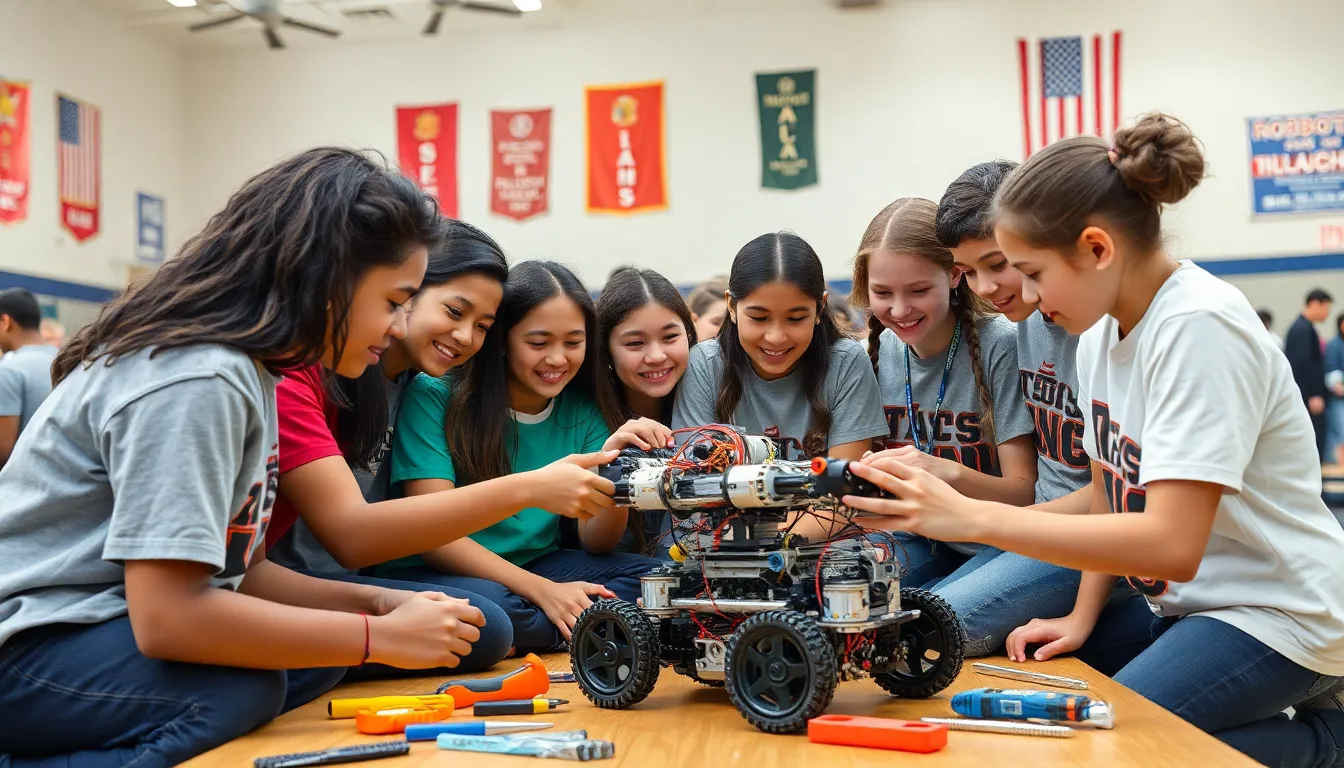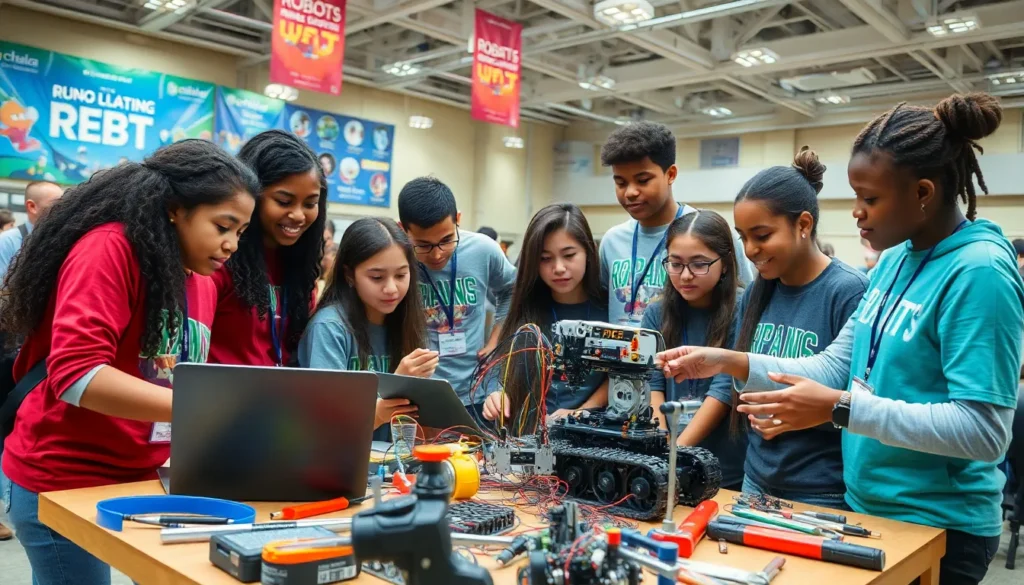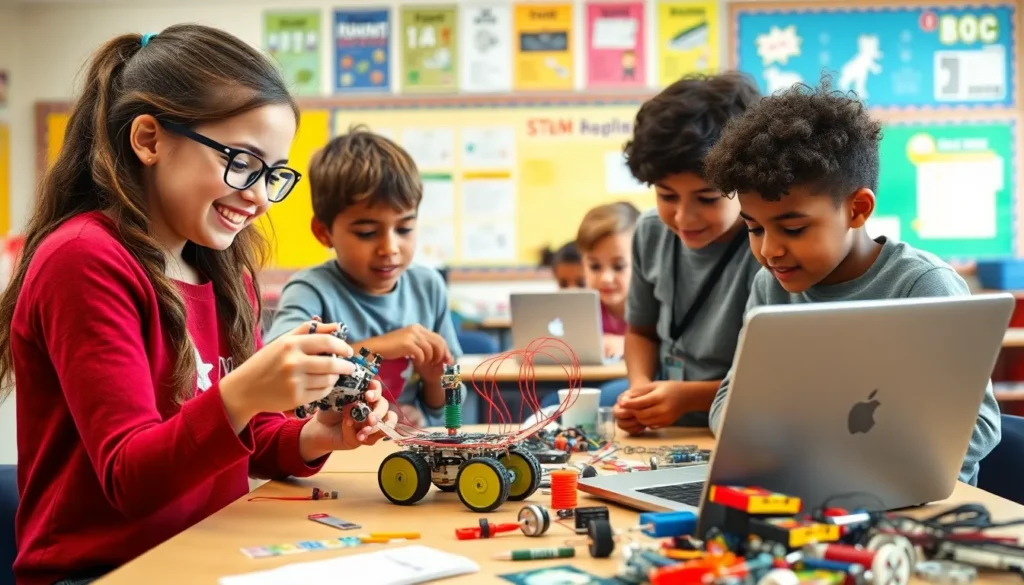Table of Contents
ToggleIn a world where creativity meets critical thinking, STEM competitions are the ultimate playground for budding innovators. These contests not only challenge students to flex their intellectual muscles but also give them a chance to shine brighter than a supernova. Who wouldn’t want to build a robot that can dance better than they can?
Overview of Stem Competitions
STEM competitions foster innovation and creativity by presenting real-world challenges. Students in these contests explore various fields, including science, technology, engineering, and mathematics. Each competition encourages participants to think critically and work collaboratively on projects.
Robotics competitions, for example, challenge teams to design and build functioning robots. Events like FIRST Robotics Competition and VEX Robotics Competition attract students from diverse backgrounds. Participants often learn to program, construct circuitry, and solve engineering problems effectively.
Science fairs showcase individual or group projects, inviting students to conduct experiments and present findings. These events, such as Intel International Science and Engineering Fair, emphasize scientific research and encourage exploration of advanced topics. Young scientists demonstrate hypotheses and showcase their ability to analyze data.
Math competitions, including Math Olympiads and AMC, test problem-solving skills in a timed environment. Contestants tackle complex mathematical problems, enhancing their analytical thinking and quantitative reasoning abilities. Awards often recognize the highest performers, motivating students to excel.
Entrepreneurship challenges encourage teaming up with peers to develop innovative business ideas. Participants create business plans or prototypes, addressing real-life problems through inventive solutions. These competitions prepare students for future ventures in startup environments and corporate settings.
STEM competitions serve as a dynamic platform for students to enhance their skills, collaborate with peers, and discover new interests. Each segment of these contests emphasizes essential abilities that prepare participants for academic and career success.
Types of Stem Competitions

Various types of STEM competitions exist, each encouraging participants to explore different aspects of science, technology, engineering, and math. These contests promote skill development and teamwork while fostering a passion for problem-solving.
Robotics Competitions
Robotics competitions engage students in design and programming tasks that culminate in building fully functional robots. Notable events like FIRST and VEX challenge teams to create robots capable of specific tasks within a set timeframe. Students learn engineering principles, coding techniques, and project management skills. Such activities stimulate creativity and critical thinking as participants tackle real-world challenges.
Science Fairs
Science fairs provide a platform for students to present innovative scientific research. Participants develop experiments addressing a research question or problem and showcase their findings through presentations and displays. Judges evaluate projects based on creativity, methodology, and understanding of scientific principles. Engaging in this competition enhances research skills, scientific literacy, and the ability to communicate complex ideas effectively.
Engineering Challenges
Engineering challenges focus on problem-solving in practical applications, inspiring creativity in design and construction. These contests often require teams to devise solutions to real-world engineering problems, such as building bridges or designing structures. Constraints maximize the need for ingenuity and collaboration, fostering teamwork in the process. Participants gain valuable experience in project planning and execution, benefiting their future engineering pursuits.
Benefits of Participating in Stem Competitions
Engaging in STEM competitions offers numerous advantages for participants. These contests promote skill enhancement and provide valuable networking opportunities.
Skill Development
Participating in STEM competitions enhances essential skills vital for personal and professional growth. Students improve their problem-solving abilities as they tackle complex challenges. Competitors also gain hands-on experience in engineering, coding, and research methodologies. Collaborating with peers fosters teamwork and communication skills, crucial for future endeavors. Furthermore, competitions encourage critical thinking as participants navigate real-world scenarios. This skill set translates directly into academic and career success, preparing students for diverse paths in science, technology, engineering, and mathematics.
Networking Opportunities
Participating in these competitions opens doors for valuable networking opportunities. Students connect with like-minded peers eager to share ideas and collaborate. Mentorship from industry professionals often occurs during these events, providing insights into real-world applications of their skills. Additionally, competitions attract educators and businesses that may recognize and nurture talent. Building a network during these competitions can lead to internships, scholarships, and job offers. Engaging in conversations with participants from various backgrounds enriches their professional outlook as participants expand their horizons and develop lasting relationships.
Challenges Faced by Participants
Participants in STEM competitions encounter several challenges that can impact their performance and experience. These obstacles often vary based on the type of competition and available resources.
Funding and Resources
Limited funding creates a significant hurdle for many participants. Schools and teams may struggle to secure financial backing for materials, tools, and transportation to events. Consequently, this lack of resources often constrains project scope and quality. Many participants turn to local businesses or crowdfunding platforms for support. However, not all teams succeed in obtaining the necessary funds, which creates disparities in opportunities. The unavailability of advanced equipment also affects students’ ability to innovate fully, as access to cutting-edge technology can lead to more refined projects.
Access to Mentorship
Finding suitable mentors poses another challenge in STEM competitions. Access to experienced professionals dramatically influences participants’ projects. Students benefit from guidance in areas like design, coding, and project management. Yet, many struggle to connect with mentors due to geographical limitations or lack of outreach programs. Schools in underserved areas often face greater difficulty, leading to missed opportunities for valuable insights. Establishing formal mentorship programs can help bridge this gap and enhance learning experiences for students.
STEM competitions ignite passion and creativity in students while honing essential skills for future success. These contests not only challenge participants to think critically but also foster collaboration and innovation. As students engage in robotics, science fairs, and engineering challenges, they build a strong foundation for problem-solving and teamwork.
Despite the obstacles some face, such as funding and mentorship gaps, the benefits of participating in these competitions are undeniable. They provide valuable networking opportunities and a chance to connect with industry professionals. By addressing the challenges within the STEM landscape, educators and organizations can further enhance the experiences and outcomes for aspiring innovators. Ultimately, STEM competitions play a crucial role in shaping the next generation of thinkers and problem solvers.







